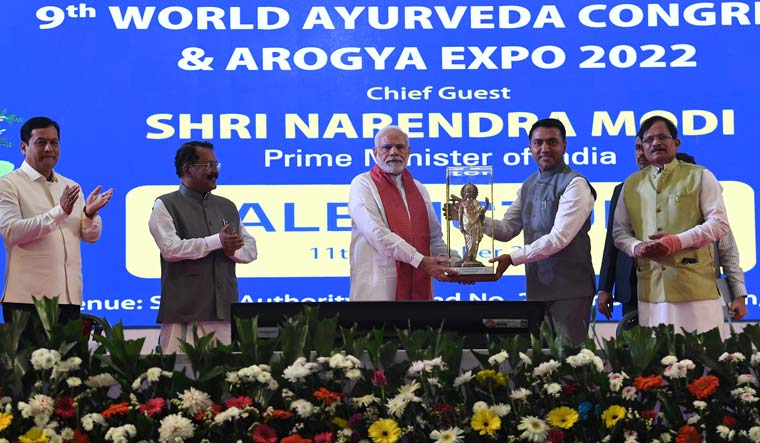Can technology and ayurveda go together?
Yes, according to the speakers at the recently concluded World Ayurveda Congress (WAC), organised by the World Ayurveda Foundation (an initiative of Vijnana Bharati) with support from the Union ministry of Ayush and the government of Goa. At the ninth edition of WAC, held at Panaji, experts spoke about incorporating technology in the ancient wellness system for it to reach global standards. They agreed that ayurveda must accommodate innovative designs and introduce modern tools to improve its treatment procedures.
According to Dr Sumer Singh of IIT, Delhi, there is a dire need for successful conversion of cutting-edge technology into saleable products in a competitive world. “Several brilliant ideas fade away at the prototype stage,” he said. “A chunk of those that manage to go further fail at the trial-and-error phase. Eventually, very few make it to the market and stay popular for long.”
Ever since the setting up of Ayush as a separate ministry in 2014, ayurveda has received a boost like never before. For it to stay relevant, it should focus on versatility as much as quality, said Dr Rangesh Paramesh, head (drug discovery) at Himalaya Wellness Company. “Concepts about herbs vary from country to country,” he said. “Green tea, for instance, is a health supplement in the US, while it is medicine in Australia.”
The WAC charted out a global roadmap to harness ayurveda’s potential as a scientific and prevention-oriented health care system. Doctors from different states presented case studies highlighting the critical, but largely undocumented, contribution of ayurveda in preventing the spread of the coronavirus and mitigating the suffering of patients in various stages of infection. “The pandemic was a very challenging situation,” said Prof J.S. Tripathi, former head of department of Kayachikitsa, Benaras Hindu University. “But it also opened a potential area for ayurveda. It demonstrated that ayurveda can contribute significantly in managing communicable diseases.”
Ayurveda practitioners and researchers from leading institutions emphasised the importance of collection and documentation of data pertaining to the effective intervention of ayurveda during Covid-19 and called for scientific analysis and evidence-based research. The speakers also noted that a scientific evaluation of data would help explore the possibility of evolving standard protocols in managing pandemic-like situations through Ayush. The presentations covered a wide range of topics like intervention of Ayush during the pandemic, clinical outcome of ayurvedic treatment, pandemic lessons for future therapeutic development, the effect of ayurvedic treatment in Covid positive cases, institutional assessment of the pandemic through ayurcare and the role of ayurveda in managing comorbidity and post-Covid health issues.
Ayurcosmetology is another area that has global reach potential. World over, there is big demand for herbal-based and chemical-free ayurveda cosmetics. Experts agreed that maintaining authenticity and quality are vital parameters to tap the huge global demand. Noting that the global beauty products market is projected to grow from $35 billion in 2021 to $59 billion by 2031, Dr Sneha Surendran stressed on strengthening the regulatory protocols to ensure a correct demarcation between ayurveda and non-ayurveda products. While moderating the session on ayurcosmetology, Dr Santosh Chavan, professor and head of department of Panchakarma, Bharati Vidyapeeth, Pune, said, “It is important to strengthen the link between ayurveda research institutions and the corporate sector to see that the results of authenticated findings reach the market for the benefit of people.” The session saw presentations on a range of topics like ayurvedic remedies for hair fall, effect of ayurvedic oils in management of dandruff, efficacy of ayurvedic creams against melasma and skin blemishes and regulatory protocols in the US and other western countries.
In a presentation on ‘Ayurveda Heals: Success Stories’, researchers highlighted the importance of Panchakarma in dealing with heart failure-related ailments. According to Dr Asha Shabrani, Panchakarma therapy along with langhan chikitsa (detox therapy), exercise, lifestyle modification and stress management can help in inhibiting neurohormonal activation and reducing the myocardial wall stretch.
Meanwhile, Dr G.G. Gangadharan, director of Bengaluru-based Ramaiah Ayurveda Hospital, called out the suppression of ayurveda by dominant sciences. “That is bad,” he noted. “We should not dilute our principles in the name of promoting integrated medicine.”


